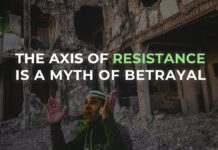
Throughout the Syrian conflict, reports of horrific crimes committed by armed groups circulated widely. However, the exact affiliation of these groups with the Syrian Regime remained unclear. The CIJA report now establishes a clear connection between the regime’s chain of command and these paramilitary organizations. Eyewitness accounts, survivor testimonies, and social media evidence had already documented their heinous acts of violence. But the CIJA report provides irrefutable proof of the regime’s involvement, challenging its long-standing plausible deniability and exposing the state’s reliance on these brutal gangs to enforce its crackdown on dissent.
Autocratic regimes have historically employed paramilitary groups to carry out their dirty work while maintaining plausible deniability. The Syrian Regime followed this pattern by outsourcing some of the most vicious acts of violence during the conflict. CIJA’s evidence reveals how the regime planned, organized, and deployed these groups to assist in suppressing the opposition. By relying on these loyalist and paramilitary organizations, the state was able to distance itself from direct responsibility, claiming that these groups acted independently.
One of the most significant findings in the CIJA report is the role of the Ba’ath Party in mobilizing and coordinating loyalist groups. The extensive network of the Ba’ath Party provided the regime with a convenient structure to recruit loyalists and establish organizations like the Popular Committees. These committees, consisting of party loyalists and trade union members, were portrayed as a spontaneous pro-regime response to the protests. However, CIJA’s documents demonstrate how these committees were closely instructed and monitored by the regime, further exposing the state’s involvement.
As the uprising evolved into armed opposition, the Syrian Regime sought to improve its control and coordination of security measures. The creation of the Central Crisis Management Committee (CCMC) brought together senior figures from national security and intelligence agencies, forming a unified leadership body. The committee issued orders to escalate confrontations with the opposition, train loyalist groups in the use of weapons, and directly target opposition members. This integration of paramilitary groups with formal security forces intensified the violence and repression.
The CIJA report marks a significant milestone in uncovering the truth behind Assad’s ghosts. By providing concrete evidence of the Syrian Regime’s link to paramilitary groups, the report challenges the regime’s narrative and underscores the need for accountability for the crimes committed during the conflict.








